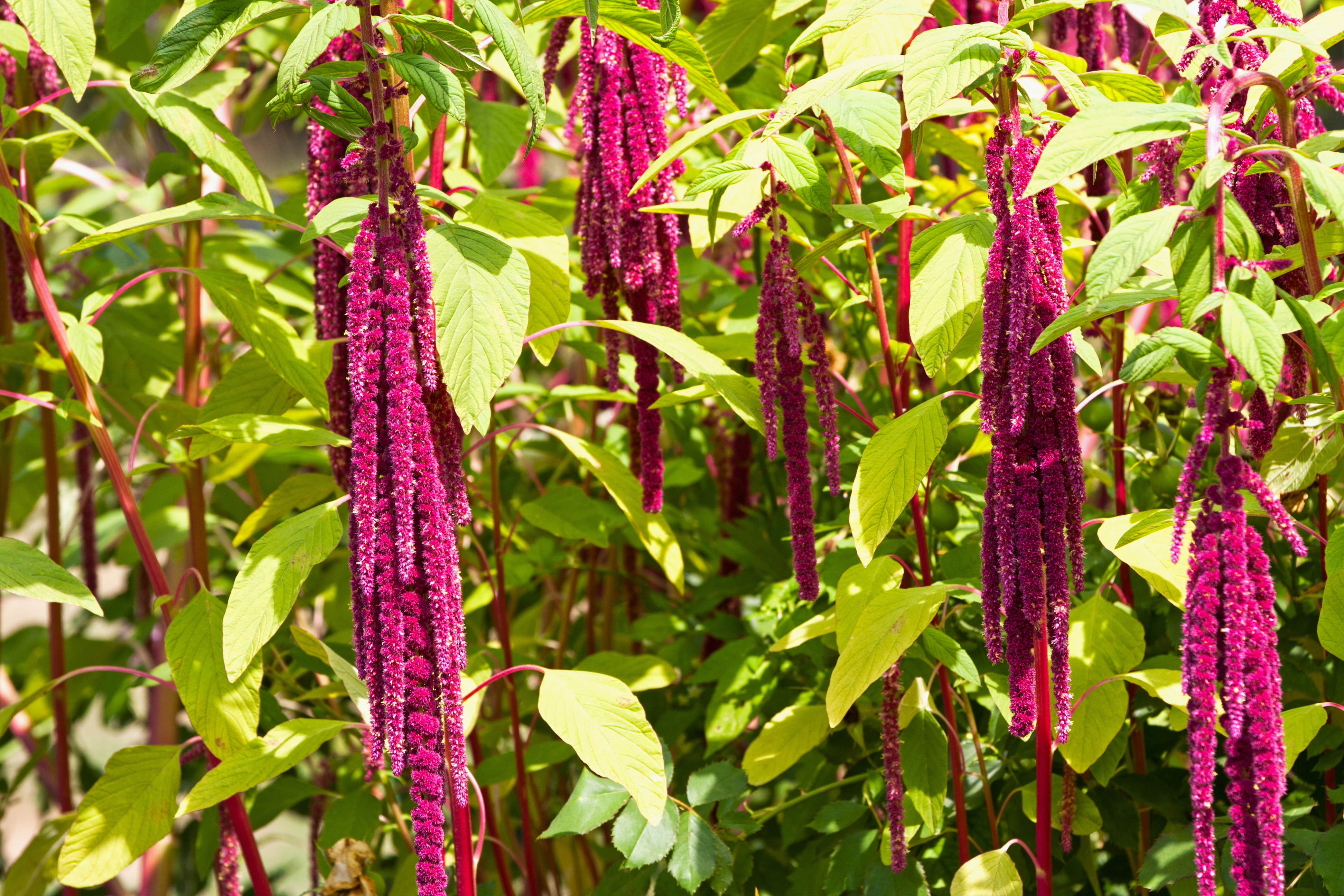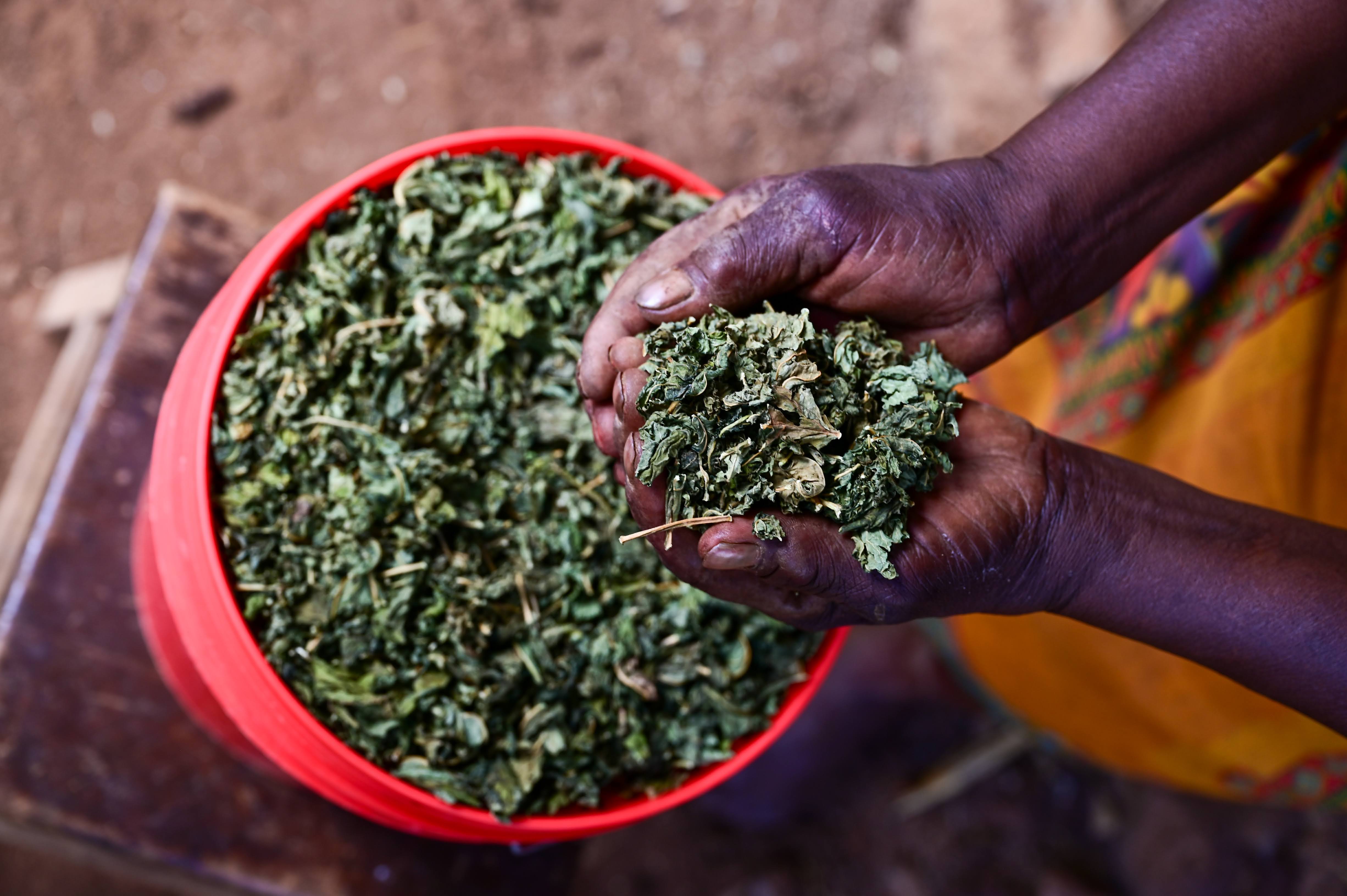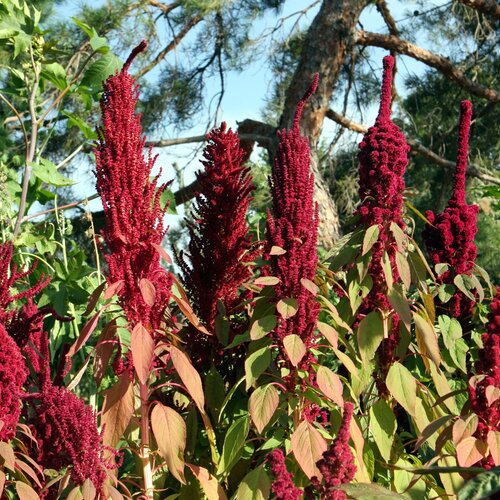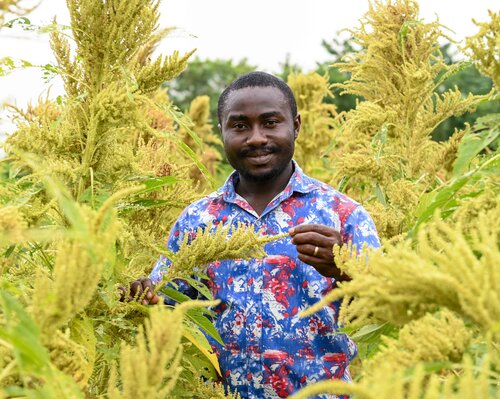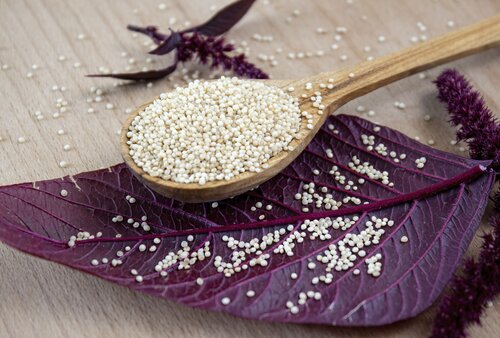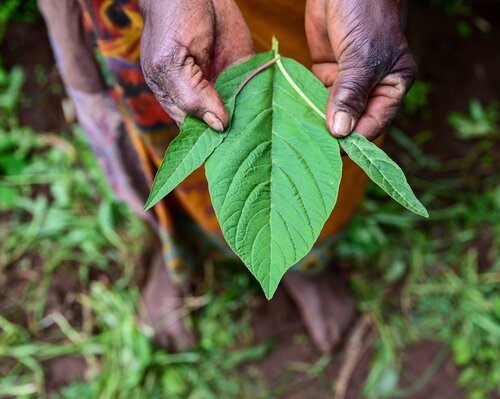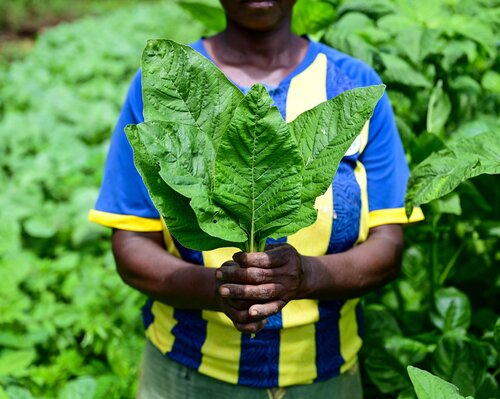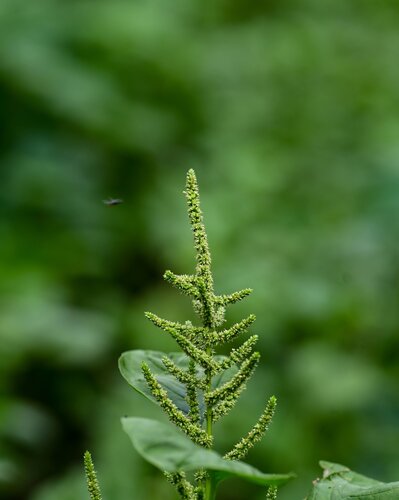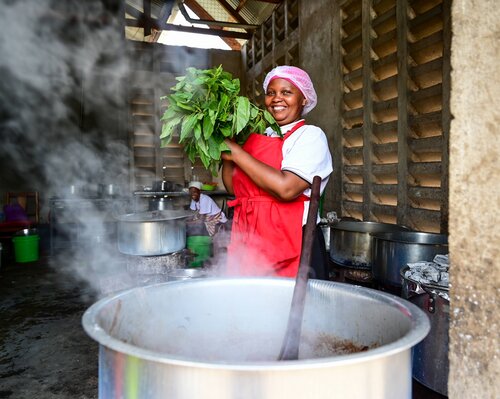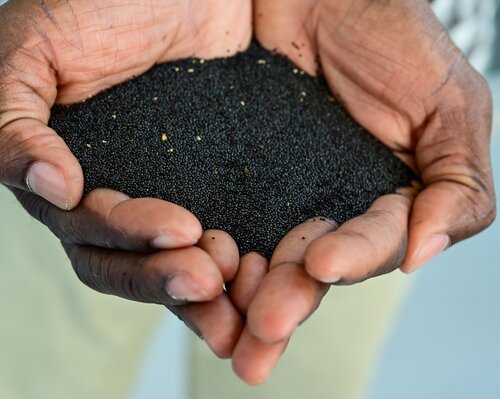Amaranth
Amaranthus cruentus
Crop Overview
Red amaranth (Amaranthus cruentus L.) is a so-called “pseudocereal”, a plant that produces seeds that are used and consumed as grains but is not in the grass family like true cereals. It grows to a height of up to 2 meters tall, with large seed heads carrying around 50,000 tiny seeds that are 1–2 mm in diameter.
The plant originates from Central America, with a native range from Central Mexico to Nicaragua. It has been grown for food for at least 6,000 years and was a staple in pre-Columbian civilizations, including the Aztec and Inca cultures. It is now found throughout tropical Africa and is also an important vegetable crop in India, Bangladesh, Sri Lanka and the Caribbean.
Common names include Mexican grain amaranth, blood amaranth and velvet flower in English, amaranto and cola de zorro in Spanish and amarante and amarante étalée in French.
Characteristics, Cultivation and Agricultural Practices
Amaranthus cruentus thrives in warm, tropical and subtropical climates but adapts well to temperate regions. It prefers well-drained, fertile soils with a pH ranging from slightly acidic to slightly alkaline. The crop is drought and heat-tolerant and has lower water requirements than wheat and maize. The main disease that affects the plant is stem rot. Leaf and stem blight has been reported in Brazil and leaf spot in Tanzania. White rust and amaranthus anthracnose have been reported as a serious problem in Taiwan and elsewhere. Pests include leaf miners, stem weevils and the southern beet webworm moth.
Seed yields of up to 7 tonnes per hectare have been reported in South and Central America, while a yield of 3.7 tonnes per hectare has been reported in field trials in Italy. However, yields of 800–1,200 kg per hectare are more normal. Leaf yields can be as high as 30 tonnes per hectare.
Amaranthus cruentus can be grown in monoculture or intercropped with maize, beans or other staple crops. It requires minimal inputs, making it suitable for smallholder farmers with limited resources. In urban areas, it is often cultivated in backyard gardens. It is also commonly grown as an ornamental plant.
Nutritional, Economic and Medicinal Value
Red amaranth seeds are rich in high-quality protein and essential amino acids. The seeds are gluten-free and contain significant amounts of calcium, iron, magnesium and phosphorus. The leaves are a good source of vitamins A, C and folate, dietary fiber and antioxidants.
The seeds can be ground into flour, popped like popcorn, cooked into a porridge or used to make confectionery. The leaves can be cooked as a leafy vegetable like spinach or stir-fried.
The crop plays a key role in food security, especially in marginalized communities. It provides a low-cost, nutrient-dense alternative to staple grains. The leaves and seeds fetch good market prices in urban areas, boosting household incomes.
The whole plant can be used as animal feed, fresh, dried or as silage.
Traditionally, red amaranth has been used to make a laxative for infants, to alleviate pain, expel tapeworms and for dressing wounds. Its bioactive compounds exhibit anti-inflammatory, antioxidant and cholesterol-lowering properties. Additionally, its oil is used in lubricants in the computer industry and in cosmetics.
Cultural Importance
Red amaranth is widely used in civil and religious ceremonies, including in India and by the Zuni people, a Native American people in New Mexico, USA. In some African and Asian cultures, amaranth is a symbol of abundance and vitality, used in rituals and festive dishes. In Mexico, it is used to make alegrías, traditional sweet treats made from popped seeds and honey, a practice rooted in ancient Aztec traditions.
Gender Perspectives
As is common in many smallholder agricultural systems, women are more involved than men in red amaranth production in many countries in Africa, in Central America, in India and in other parts of Asia. It is easy to grow, which allows women to contribute to household food security and income with little investment.
Scaling up the cultivation of red amaranth can create income-generating opportunities for women. Training in value-added processing, such as producing flour or amaranth-based snacks, can enhance their economic independence.
Why is the Crop Underutilized?
Key constraints to increased utilization of red amaranth include lack of improved varieties and weakness of markets for seed and vegetable varieties. There is also little information available on agronomic practices. Equipment for mechanized planting and harvesting is lacking, which limits scale of production and increases labor requirements.
Diversity Available in Genesys
Genesys, the online information platform about plant genetic resources for food and agriculture conserved in genebanks worldwide, lists just over 3,000 samples of red amaranth. The largest holdings are at:
- Unité de Génétique, Biotechnologie et Science des Semences in Benin – 1,208 samples.
- The Centre for Plant Diversity in Hungary – 397 samples.
- The North Central Regional Plant Introduction Station in Iowa, USA – 363 samples.
- Embrapa Recursos Genéticos e Biotecnologia in Brazil – 326 samples.
Current Breeding Efforts
Little information is available on breeding efforts directed at red amaranth. Most breeding seems to have been limited to selection of suitable genotypes from landraces.
The numerous tiny flowers of red amaranth mean making crosses is difficult.

